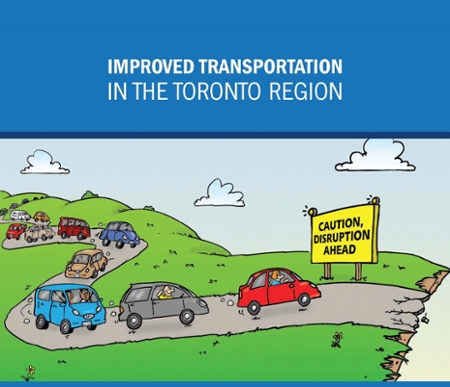Driving a made-in-Ontario solution to congestion, climate change, and economic prosperity
Posted by Daniel Hoornweg on November 15, 2018

The door-knocking campaigns are over for most politicians as they take their new places in Council Chambers and at Queen’s Park. From Kitchener to Oshawa and up to Barrie, ask any of them what they most-often heard from their constituents, and you are likely to hear, ‘Traffic! Congestion! Safety for pedestrians, cyclists and drivers.’ There was also concern over climate change – Ontario should do its part. Others raised anxieties over Ontario’s lagging economy and long-term outlook.
This week marks the deadline for public submissions to the Ontario Ministry of Environment, Conservation and Parks new ‘made-in-Ontario’ climate change plan. Goals for the plan include enhanced resilience, a durable role for the private sector, and balancing carbon mitigation efforts with the needs of household affordability.
What if there was a way to address carbon reduction, increase resilience (ability to weather future storms), reduce congestion, and help with home budgets all at the same time? There is.
The University of Ontario Institute of Technology submitted a summary note to the Ministry of Environment, Conservation and Parks. The plan calls for integrated mobility as a service. Make it easy for people to get around Ontario.
Preliminary estimates suggest an integrated mobility program could reduce Ontario’s carbon emissions by 25 million tonnes per year (even more than shifting out of coal). This program could save every household up to $8,000 per year while making it easier to travel throughout the province; and it could start as early as next year since new infrastructure needs are modest.
This all may sound too good to be true. Why has it not already happened?
Complex problems like climate change and traffic congestion are usually solved through small often-unconnected steps. Co-ordination is difficult as transportation oversight in Ontario, for example, has more than 200 local governments, several provincial and federal ministries, and hundreds of private sector partners driving for results. New infrastructure like highways and subways can take more than 20 years to materialize. Taxi drivers fear new entities like Uber and Lyft, local transit authorities often stop routes at municipal borders and prevent emerging private sector operators from contributing to systems, and everyone opposes the most powerful traffic-management tool, road usage pricing.
The time is right to proactively change mobility. Transportation emissions are the largest source of greenhouse gas (GHG) emissions in Ontario (and fastest growing). Mobility is one of the most critical sectors that needs strengthening to better prepare us for a changing climate. Mobility is also one of the most important ingredients for a strong economy.
Through ‘surface subways’ running between Waterloo and Peterborough and from Niagara Falls to Sudbury, linking key transit nodes like universities and major employers, a common smart-phone platform supported by local governments, and ridesharing programs, enormous reductions in carbon emissions and fuel-use costs are possible. Such systems should increase Ontario’s overall quality of life and provide much improved service to the poor and elderly.
Launching a program of this scale requires unprecedented co-operation. There is no single stakeholder that can make this happen, yet there are many that can individually and collectively raise road-blocks. The hope is that the potential benefits of the program are so large that they can catalyze the needed actions. Here’s hoping.
A copy of the report is available at this link.
Filed under: Sustainability 101